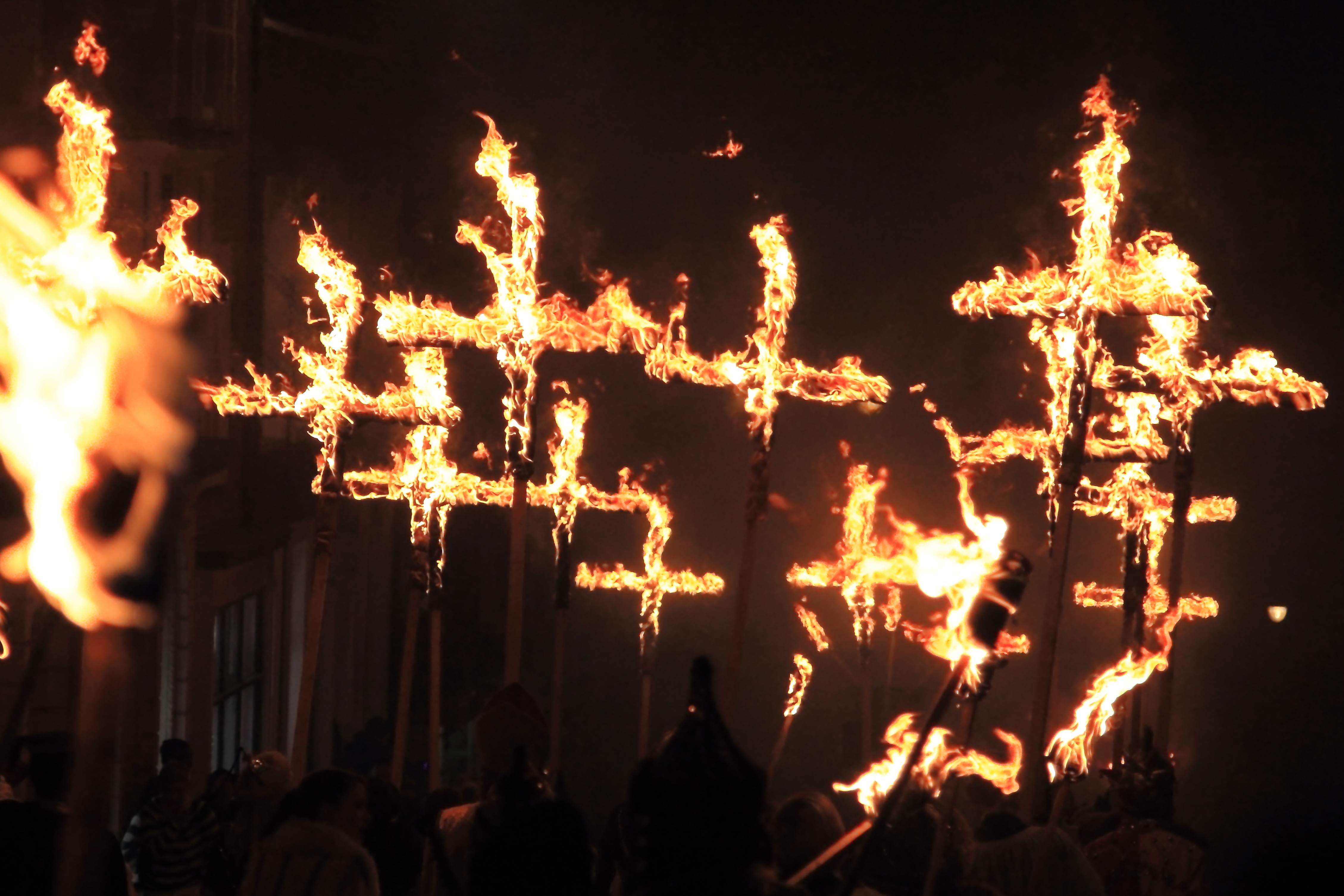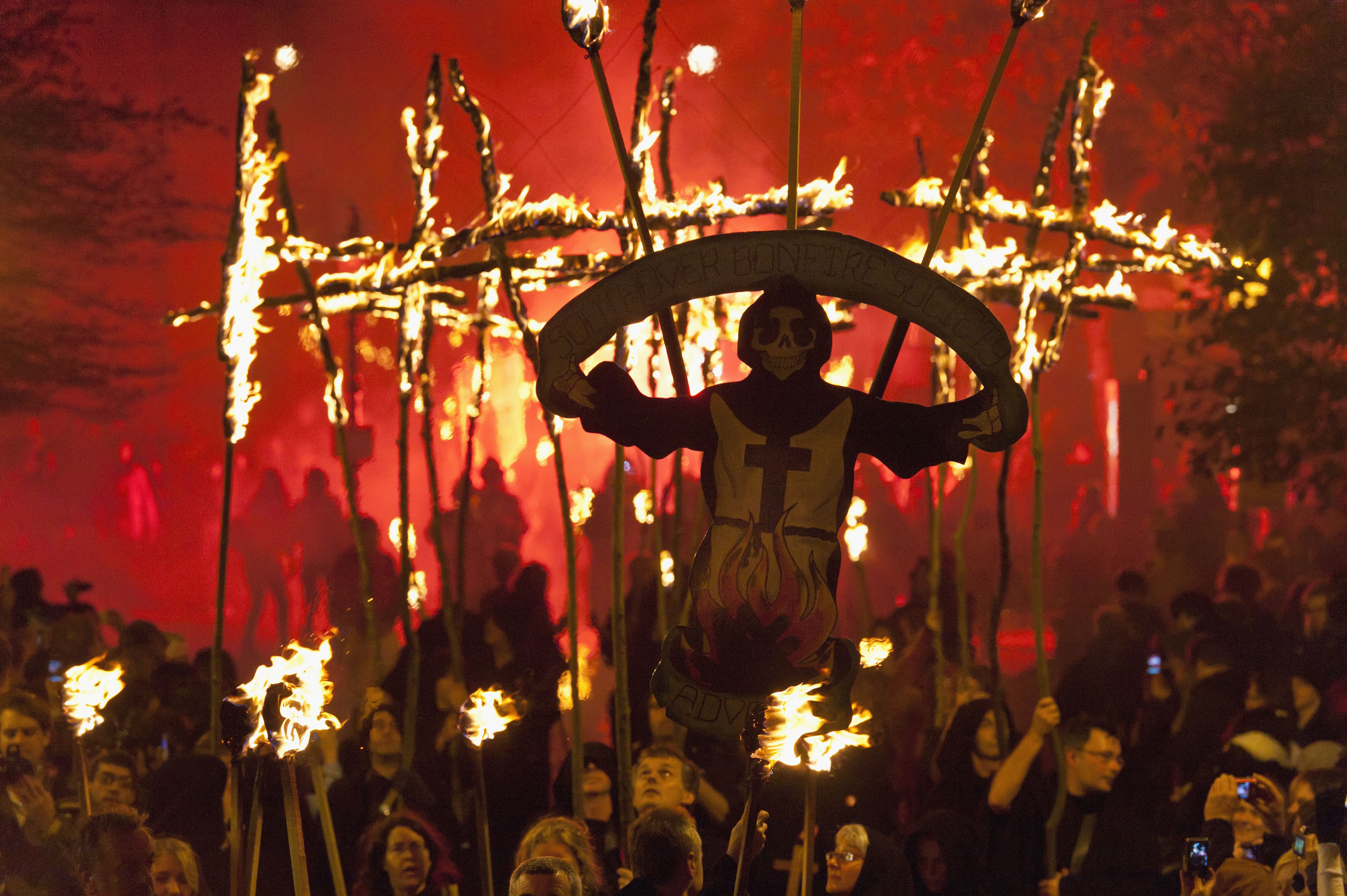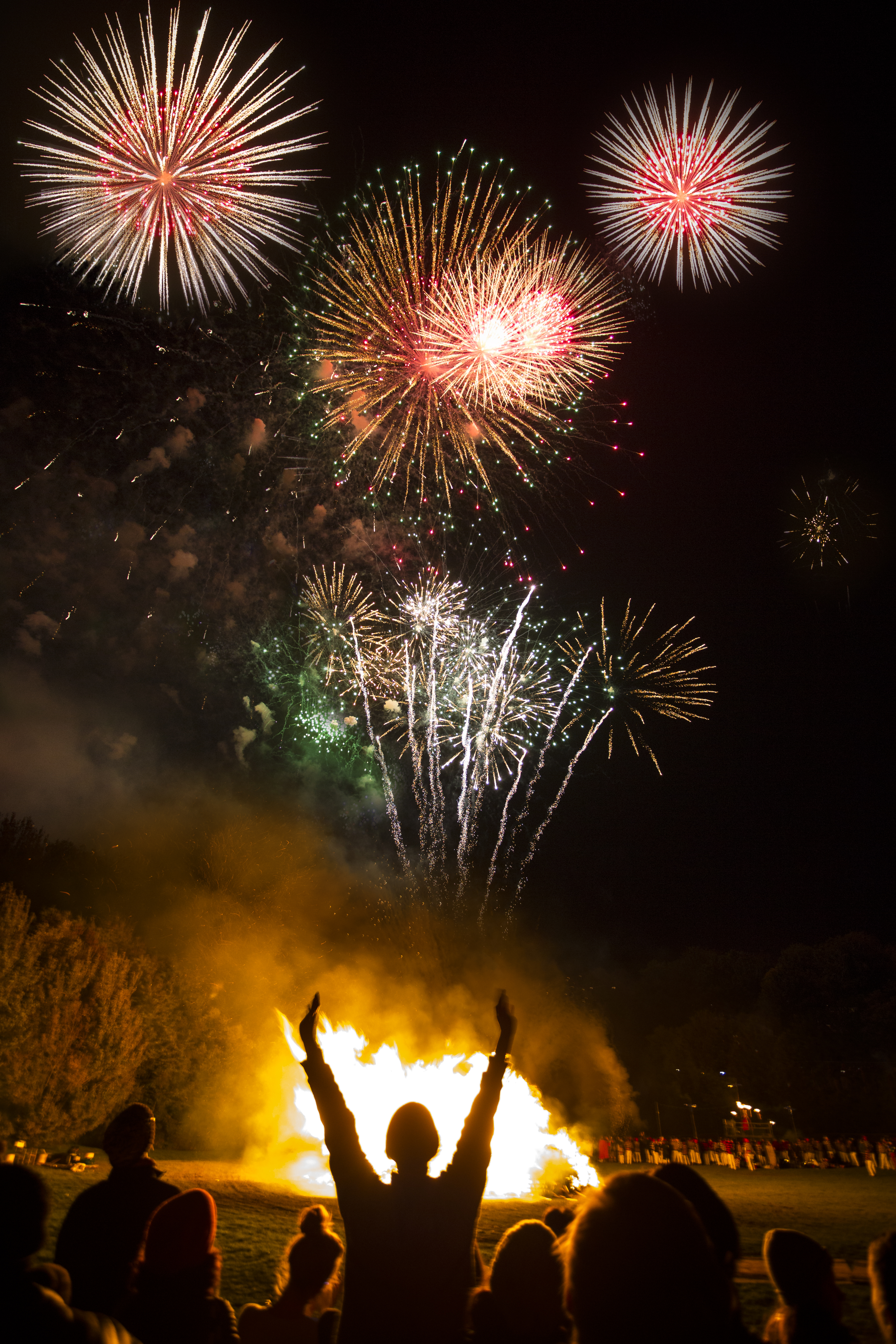‘Pope Paul V remains a popular effigy today, and gets blown up in Lewes most years’: A five minute guide to England’s wackiest Bonfire Night celebrations
The market town of Lewes in East Sussex has not one, not two, but seven bonfire societies and its celebrations have been labelled the ‘only proper Guy Fawkes night left’.


Bonfire Night is tomorrow, but in Sussex, things have been whizz-banging since September. Unofficially, bonfire season kicked off in Uckfield (a town known for its large torchlight procession) with the Carnival on September 6, and will wrap up on November 22, when the villages of Robertsbridge and Barcombe set their Guys alight.
All in all, there are more than 30 bonfire celebrations throughout Sussex (mostly in East Sussex), staging nights of performative civil disobedience and protest while collecting money for local charities. Plenty of residents attend and even march in more than one event. If you liked, you could spend the autumn here doing next to nothing else.

Every year, thousands of people parade through the narrow streets. The evening comes to an end with the burning of an effigy usually representing Guy Fawkes who died in 1605 after an unsuccessful attempt to blow up the Houses of Parliament.

When my family first moved from London to Firle, a small estate village in the South Downs National Park, at the end of the summer in 2020, we joined the Firle Bonfire Society (£10 per person, per annum; pick up your button at the pub) the same way you might join the community WhatsApp group. That is to say, without a lot of thought. We were in the dark about what, exactly, the society did, right up until the night in question, when the drums started beating, and hundreds of people in wide-ranging traditional costumes, their flaming torches and crosses held aloft, started congregating in front of the village shop. The atmosphere was upbeat and broadly anti-authority: a mass of focused participants, wearing costumes to represent historical rabble-rousers. There were smugglers in stripy tops (probably the most popular bonfire costume, in this seaside county), American revolutionary war soldiers, pirates, and Romans in the mix. The spirit of it was catching. We’ve attended every year since.

Last year's iteration attracted 40,000 people and some excellent costumes.
The biggest and best known bonfire night in Sussex, probably in all of Britain, is held in the medieval, earthy-crunchy market town of Lewes. The annual event has been running since 1795, but really began to pick up steam in the mid 19th century, following a wave of anti-Catholic sentiment (Pope Paul V, the leader of the Catholic church during the Gunpowder Plot, remains a popular effigy today, and gets blown up in Lewes most years; some bonfire societies still march beneath signs reading ‘No Popery’). Like other bonfire celebrations, Lewes commemorates the thwarting of the Gunpowder Plot, but it also pays tribute to the Lewes Martyrs — 17 protestants who were burned alive in the town during the reign of Queen Mary I in the 1550s — adding some local lore to the festivities. The event almost always takes place on November 5, unless that date falls on a Sunday. Locally, people will tell you it’s the only proper Guy Fawkes night left. Elsewhere, people might say it’s a tricky occasion to parse from the outside: full of fire and hollering, vaguely Pagan, expansively anti-establishment, sometimes intimidating in press photos — more so than it is in real life.

A reveller dressed as a monk brandishes a Southover Bonfire Society banner.

While most participating villages have a single bonfire society, Lewes is home to seven different bonfire societies, each with their own history, costumes and allegiances (and occasionally, rivalries). Each of the seven societies builds an effigy of their choosing, which is often kept under wraps until the 5th. The effigies are larger-than-life symbolic figures of real people, or sometimes objects, paraded through the streets before jeering crowds and then set on fire. Pope Paul V and Guy Fawkes are mainstays, and other effigies vary from year to year, influenced by events in the UK and across the world. In the past, effigies have been made for plenty of British prime ministers, Jeremy Clarkson, Donald Trump, and Kim Jong-un, among many others. Last year, Nigel Farage was depicted clutching a pint and a cigarette, holding a lead latched to two male rioters wearing dog collars; Paula Vennells, the disgraced former CEO of the Post Office, cruised down the high street atop a Royal Mail van.

There is also the more conventional fireworks display.
An estimated 40,000 people assembled in Lewes for the festivities in 2024, and this year, as is now custom, the Sussex police and various emergency services groups have issued a joint statement asking out-of-towners to stay away: ‘We ask that you do not attend Lewes Bonfire unless you are local,’ the statement reads, ‘because the crowds and narrow streets can present unique safety challenges.’ Today, trains from London won’t stop at the stations nearest to Lewes, and roads in the vicinity will close. If you happen to be nearby, you’ll see cars parked alongside the A27, left by revellers who hoofed it the rest of the way. By necessity, in other words, Lewes will pull up the drawbridge. But the silver lining? Bonfire night, around here, will stay as strange and exuberant as it ever was.
Exquisite houses, the beauty of Nature, and how to get the most from your life, straight to your inbox.
Jo writes about travel and culture for The New York Times, Conde Nast Traveller, Vogue, Elle Decor, and House & Garden, as well as for Country Life. She worked in book publishing before moving into journalism, and regularly interviews authors.
